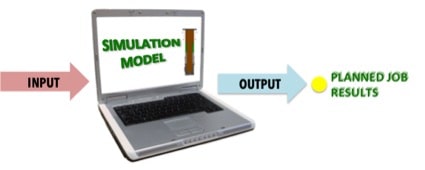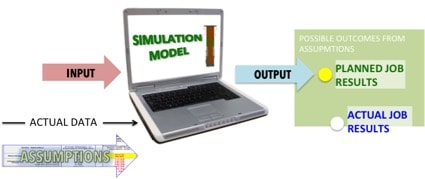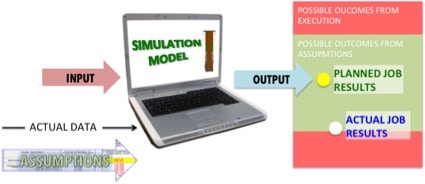KEY ELEMENTS OF A SUCCESFUL CEMENT JOB
07 January 2017Depending who explains you, there can be several possible “key elements” to get a successful cement job in place, some people would put an emphasis on the design while some others would prioritize the execution aspects instead. In my case, I like to think that a successful cement job can only be achieved by a combination of proper design and controlled job execution.
In this post, I am going to try to make a case, from basics concepts, to explain my point of view as a cementer expert with over 20 years of experience … But like I always say, the only think important those years gave me, is the capacity to listen to the well and to the people I work with…. So, if any of you have comments or feedback, please feel free to drop your word here…
Every cementing engineer knows well that when working out the hydraulic program, the information entered is made of: actual data, e.g., casing size, depths, directional survey; and assumed data, including variable information(like hole excess, casing IDs – nominal or averaged) and derived data from models (like formation pressures, temperature and fluid’s rheology).

All these inputs collectively, e.g., as result of their individual accuracy (definition: “accuracy reflects how close a measurement is to a known or accepted value”), will add a level of uncertainty to the simulation output. In other words; how close the actual job results are to the predicted output? Obviously, for us it is just going to be a single output, the simulation report. However, what we don’t see is the wide spread of possible outputs derived from individual value’s standard deviation, for the data derived from models (definition: “standard deviation is a measure that is used to quantify the amount of variation or dispersion of a set of data values”) or certainty, for the variable information.
This is the first key element of a successful cement job: accuracy of the input data. The grater the dispersion of the input values the wider the gap of possible outputs, or in common words: “garbage in garbage out”. For us, cementer, our efforts should be focused in getting our data set right and for well construction managers to make available representative and valid data. This means “cost”, but you should know by now that data collection, logging (4-arm caliper, formation evaluation, etc.), and data processing and reservoir engineering, is similar to buying an old car: you invest at the beginning, with repairs, new parts, etc., but if you do things right your cost should reduce in time to a minimum, depending on model, year, etc.

Additional variability is added during you execution, when variables like fluids rheology (mud, spacer and cement), fluids density (cement, spacer), fluid volumes, etc. differ from the values the hydraulic model is based-on. This then is related to job supervision.

Job supervision has to do with planning and preparation for the job, equipment maintenance, materials quality and availability, people’s competency and involvement of rig personnel (pre-job meetings). This is the second key element to a successful cement job.
Well, I know in these terms, this seems like a worthless pursue of job success. And that is because we know that at least one key element: accuracy of the input data, in a greater or minor degree, will always be questionable. So, what do we do?.
I already posted the answer to this one: post-job analysis and you can see why I think it is so powerful here: The real power behind Computer Simulations. Now it should be evident to you, that post-job analysis is actually a way to calibrate and re-calibrate our model.
Yes, it is correct, for those of you asking, we are not going to get the right value for all the variables, but we are going to find, if we do it right, what variables are affecting more the output and work on them to make the next job better, if we are coming from a failure, or to reproduce it, if we are coming from a success. The 3rd key element is: Post job simulation or job results analysis.
I hope this post is helpful in removing the generalized concept, that cementing is a given once you have done the “hard” part: drilling the well. Proper cementing requires adaptable engineering to the true requirements of the well. Are you ready to see those?
If you have any comments or questions, please let's start a discussion
Cheers
L. Diaz
http://better-cementing-for-all.org/key-elements-succesful-cement-job
1 Answer(s)
PLEASE LOGIN OR SIGN UP TO JOIN THE DISCUSSION
Support Spread
We need the support of our members to keep our forum online. If you find the information on spread useful please consider a donation

Posted by

Lenin Diaz
Website owner
Discussions: 7
Replies: 5
Related Discussions
Light Weight Cement for Structural Casing
Cementing 30" With No Vent Valve
Cementing through Tesco Casing Running Tool
Cement mule shoe
Displacing liner cement with water to suspend


